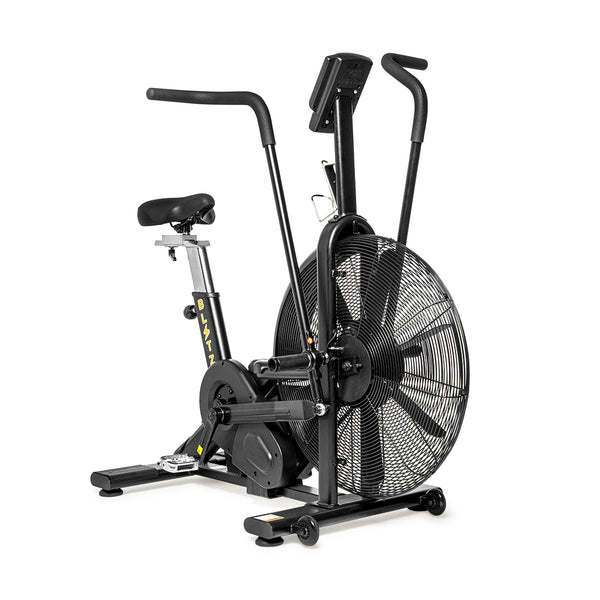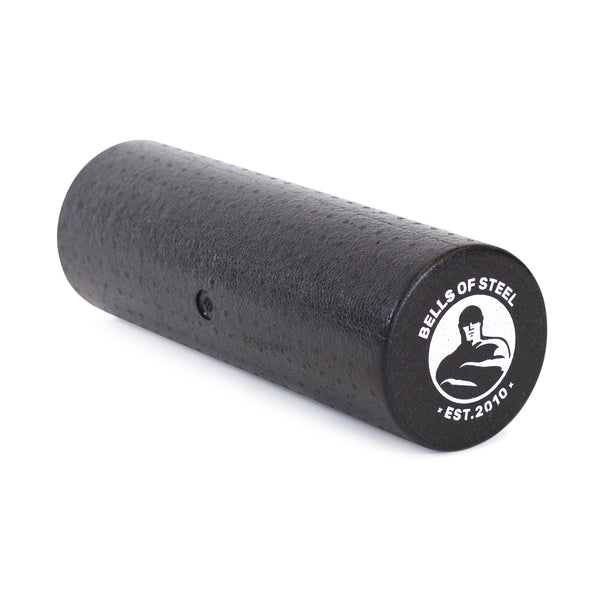Guest Post by Jim Wittstorm, physical therapist (PT) and strength & conditioning specialist (CSCS)
Squatting heavy weight feels good. Squatting without warming up, or taking an excessively long time to do so, doesn't. Surely there has to be some way to get an effective squat warm-up in a time-efficient manner, right? Yup, there is.
In this article, I'll cover the concepts that make for an effective lower-body warm-up sequence while providing a sample routine that can be completed in approximately ten minutes. The goal is to have a time-efficient system that helps you maximize your squat performance while minimizing any chance of aches, pains, or injury.
Taking ten minutes to perform a warm-up sequence is a small price to pay to ensure you have a more effective squat session—one that doesn't have your knees, hips, or low back feeling like hot garbage.
Read on to learn how to do the perfect warm-up for your next squat session. The result will be muscles, tendons, joints, and a nervous system primed and ready to deal with hefty loads, improving your body's performance AND tolerance to the task at hand.
Important Things to Keep in Mind
There are multiple movements and exercises that can be done for any warm-up. As such, it's essential to focus on the concepts of an effective warm-up rather than getting fixated on which specific exercises and movements are best. Each of us has a body that tolerates movements and positions differently, so individualizing each warm-up task (movement, position, etc.) within each concept is the name of the game here. If you do this, you'll dial in a warm-up sequence your body cherishes. So, don't get hung up on any specific exercises or movements I list below; I'm including them as examples but individualize everything to best suit your needs!
Concept 1: Break a Light Sweat
The first step in any warm-up sequence is to elevate your heart rate for a few minutes through generalized, whole-body movement. This is non-specific continuous movement, so it's up to you regarding which mode you want to pick (treadmill walk/jog, rower, Blitz Airbike, etc.) Perform this continuous, whole-body movement at an intensity that elevates your breathing but would still permit you to talk while performing the task. You're not trying to go crazy here; think of this step as turning the engine on and letting it run for five minutes.
This generalized movement elevates blood flow throughout your body, helping to physically warm your muscles, tendons, and joints. It also starts ramping up your sympathetic nervous system, which needs to function optimally for an effective squat session. The goal is to break a light sweat before moving on. You should feel warm and have a bit of sweat forming (not dripping). You can perform more than five minutes if you'd like, but five minutes should be the minimum.
Concept 2: Use Dynamic Movements
Dynamic movements are the smartest way to continue to prepare your muscles, tendons, and joints for your workout (save the static stretching until the end of your workout). The purpose of dynamic movements is to move from a generalized warm-up exercise to a more specific sequence of movements more relevant to your upcoming activity. These movements help prepare your tissues (muscles, tendons, joints) for the upcoming task. We've let the car engine idle for a few minutes, and now we're driving the car around the block--but not taking it on the highway or mashing the accelerator just yet.
There's sound science behind dynamic warm-up movements' performance-enhancing and injury-reducing effects, so don't skip them.
You need approximately two minutes' worth of 4-5 lower-body multi-joint movements that move your hips and knees through a large range of motion for a dynamic warm-up, though you can warm up for longer if it suits you. Similarly, you could add full-body movements, but lower-body-only movements tend to work best before squats. Pick which works best for you. But if you only could perform one dynamic movement for your squat warm-up, I would consider performing the elbow to in-step for two minutes:
Elbow to Instep Warm-Up Exercise

The elbow-to-instep targets just about everything in your lower body.
- Take a giant step forward and drop into a lunge.
- Try to bring your elbow as close to the floor as possible while keeping your back leg as straight as possible (put your hand on the ground rather than your elbow if needed).
- Hold this position for a few seconds, then stand back up and repeat with the other leg.
- Go back and forth for two minutes at a casual pace. Each repetition should take around ten seconds. You should get five or six repetitions per side by the time two minutes are up.
Respect your body as you do this movement; go for a mild and brief stretch and nothing aggressive.
Concept 3: Perform Soft Tissue Mobilization
With your elevated blood flow (from concept one) and specific muscle movement preparation (concept 2), it's time to briefly perform one or two minutes of soft tissue work on your muscles. The goal is to help your muscles and fascia (the tissue wrapped around your muscles) temporarily move and perform better for your upcoming squats.
This phase of the warm-up leads to less pain and likely improved mobility and performance. These muscles and fascia might return to a less supple state after your workout, but mobilizing them for a minute or so on each leg right before a workout effectively creates a window of enhanced performance. Anecdotally, I'll mention that my athletes and clients almost always mention that any muscles and tissues they target during their warm-up feel way better during the workout than when they don't mobilize them.
There are two ways you can quickly mobilize your legs:
Option 1: Foam Rolling
Foam rolling is a common method for self-treating your lower body muscles. It works just fine for what we're after here. You can roll the outside of your leg (the IT band), the front (quadriceps), the adductors (inner thigh), and even your glutes. Just quickly hit each spot for about twenty seconds on each leg. Go slowly and fight through any discomfort you feel.
Option 2: Use a Barbell
Using a barbell is my preferred method, though it's not for everyone (it can feel rather intense). Think of the barbell sleeve as a rolling pin and your tight, lumpy muscles as the dough. Slowly roll over the front, inner, and outer thigh for about twenty or thirty seconds per leg. It's agonizing…and it works. The bonus here is that resting the barbell sleeve on your leg is often less tiring than supporting your body on a foam roller.
Concept 4: Incorporate Neural Potentiation
Your nervous system is what talks to your muscles and helps them contract. The more "alert" and "awake" your nervous system is, the more effectively it can communicate with its respective muscles, allowing your muscles to initiate more efficient and forceful muscle contractions, which helps you bang out heavier squats. Without getting too technical, waking up your nervous system in a manner that helps enhance communication with your muscles (producing better muscular contraction) is known as potentiation.
There are numerous ways to implement neural potentiation right before lifting weight, but I will keep it simple and practical for the sake of this article. Performing fast movements with light loads is one way to potentiate your nervous system, and for general lifting purposes, one or two movements should suffice.
Two movements I often have my athletes perform before a squat session are:
Movement 1: Drop Squats
Drop squats are what they sound like:
- Stand upright in an athletic stance.
- Quickly let your body fall downwards into the bottom of the squat position.
- Catch yourself at the bottom of the squat and hold the position momentarily.
- Return to a standing position and repeat.
The entire drop should take less than one second. It's designed to be a fast, sudden movement that forces you to near-instantaneously "slam on the breaks" to stop the fall, which can help "prime" your nervous system a bit more for your upcoming squat session. Bang out about twenty of these in rapid succession, which should take under one minute.
Movement 2: Bent-Knee Hip Thrusts
The bent-knee hip thrust is another outstanding movement to perform before squatting. It fires up your backside (glutes, hamstrings, and lower back) quite nicely.
- Lay on your back with your feet on a workout bench and your knees bent to 90 degrees.
- Quickly push your hips as high into the air as possible while keeping your knees bent at 90 degrees. Squeeze your glutes at the top of the movement.
- Slowly return to the starting position and repeat for 10-15 repetitions.
Starting Your Working Warm-Up Sets
Now it's time to move on to your working warm-up sets; a couple of sets with just the bar or other relatively low load. How you perform these sets is up to you; different lifters have different preferences, so take time to explore what works best for your body and your training goals. My recommended working warm-up is:
- Two sets for 10-15 repetitions with the bar.
- One set at around 30-40% of your one rep-maximum for 5-10 repetitions.
- One set at 50-60% of my one-rep maximum for 3-5 repetitions.
- One set at 70% of my one-rep maximum for one repetition.
After these working warm-up sets, my lower body feels ready for my first working set of squats.
Enjoy Your Squat Warm-Up
The entire squat warm-up process covered in this article should take at most fifteen minutes (including your working warm-up sets).
However, you can customize each concept's parameters to suit your needs. The goal is to have confidence in knowing that you're performing a time-efficient and effective warm-up routine that maximizes your squat performance while reducing the chances of pain or injury.
So, now that you know how to effectively warm up for squats, go get squatting!
Disclaimer: None of this is medical advice and is for informational purposes only; please seek an assessment from a qualified healthcare professional.
This is a guest post by Jim Wittstrom. Jim is a physiotherapist and strength & conditioning specialist currently practicing in Calgary, Alberta, Canada. His passion is to help others overcome their physical pain and come back stronger than before. For more great info, you can find him on Strength Resurgence.



